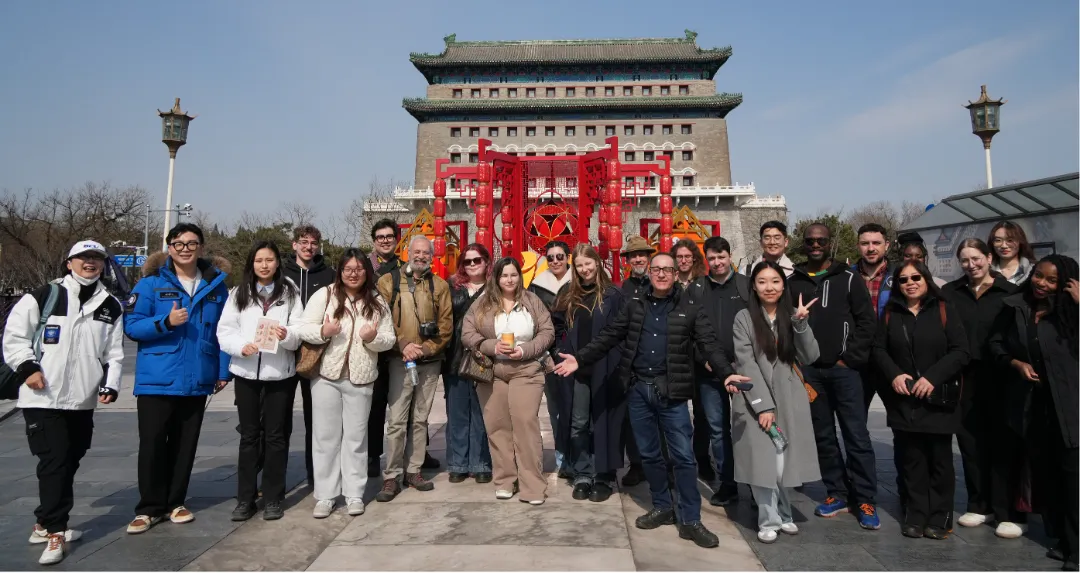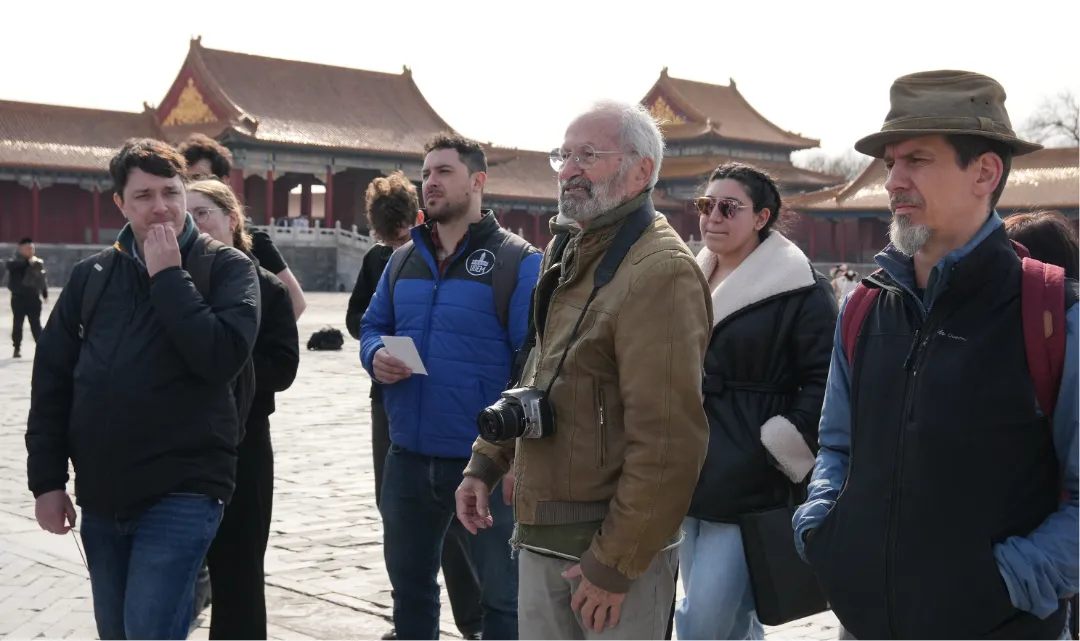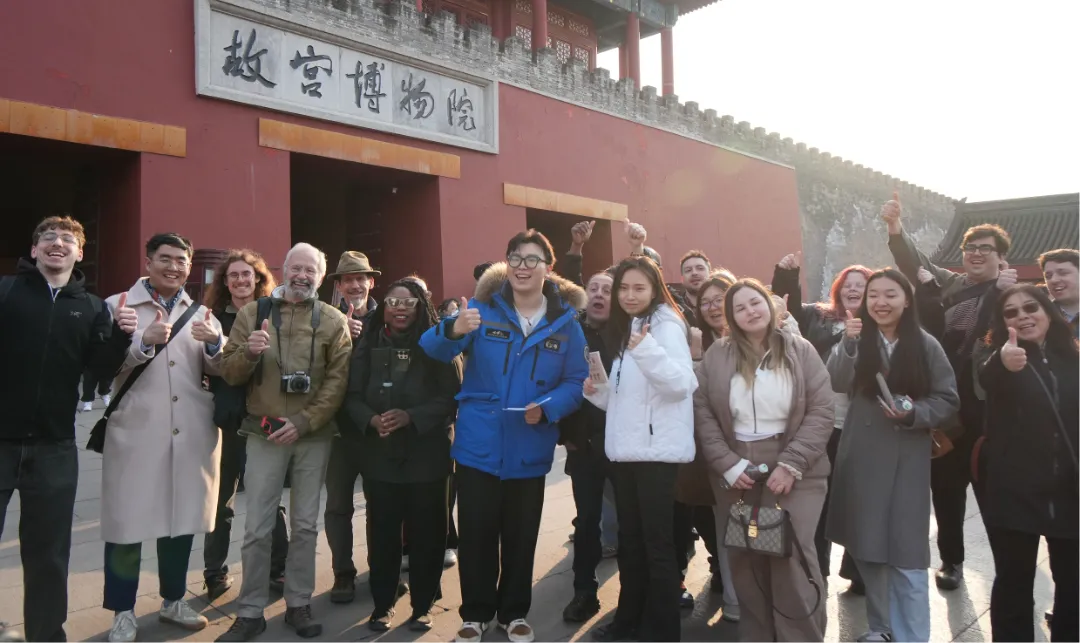To further promote the deep integration of international Chinese language education and the global dissemination of Chinese culture, in March this year, the Division of International Culture and Communication welcomed a delegation of 17 teachers and students from the Chinese language program at Université du Québec. The two universities jointly hosted a series of exchange activities centered on the theme of "Beijing's Central Axis."
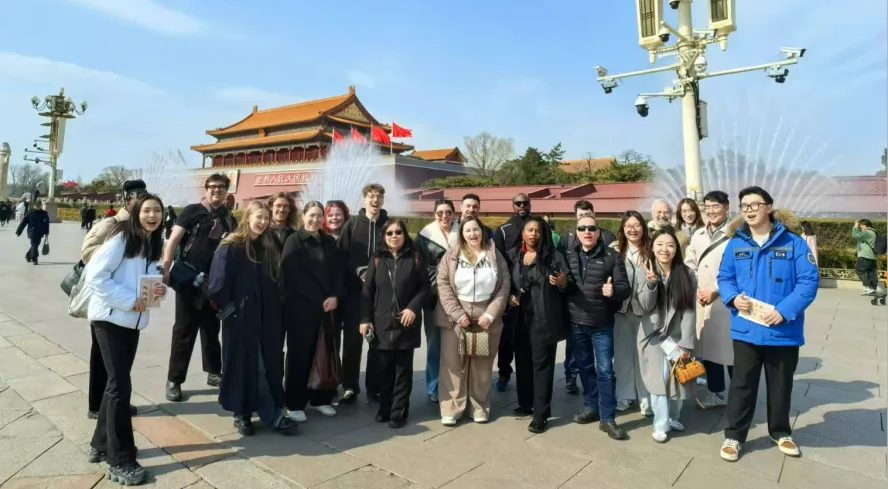



This event, built on the principle of "language as a bridge, culture as the core," explored new models of international communication and external exchange through bidirectional interaction between language practice and cultural immersion, contributing to bringing Chinese culture onto the global stage. Led by the Department of Communication, the Division of International Culture and Communication organized 33 student volunteers from the Master's program in Drama and Film & Television (Broadcasting and Directing), as well as undergraduate programs in Broadcasting and Directing, Communication Studies, English, and French. These students served in various roles, including visual and textual documentation, on-site interpretation, and teaching assistants.
On March 4, faculty and students from both universities embarked on an immersive cultural journey themed "Intangible Cultural Heritage Study of Beijing's Central Axis." The first stop was the Guangyu Yuan Museum of Traditional Chinese Medicine (TCM) History and Culture located on Qianmen Street. Students attended a lecture titled "A Journey Through the Intangible Cultural Heritage of Beijing's Central Axis," delivered by Ms. Liu Ying from Beijing Dayue Culture Communication Co., Ltd., a partner organization of our university. During the on-site visit to the Guangyu Yuan Museum, participants deeply experienced the seamless integration of millennia-old TCM traditions with modern innovation.
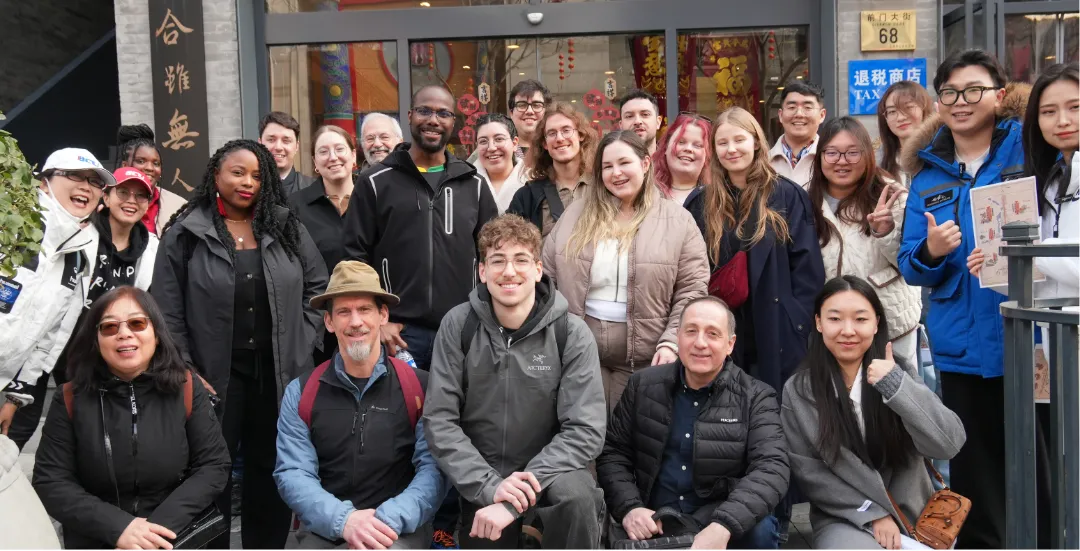


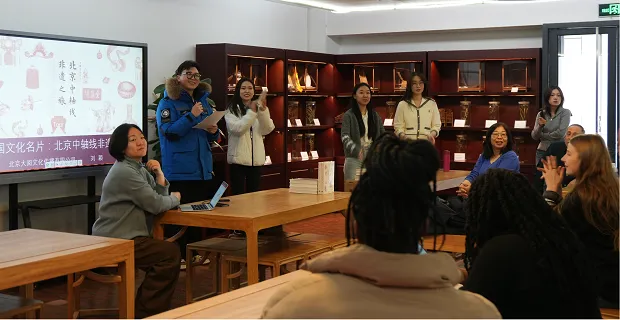

During the culinary experience session, students from Université du Québec, guided by their Beicheng peers, sampled traditional Beijing delicacies such as "douzhi" (fermented mung bean juice), "zhajiangmian" (noodles with soybean paste), and "wandouhuang" (sweet pea cake), gaining an authentic taste of the unique charm of Beijing's food culture.
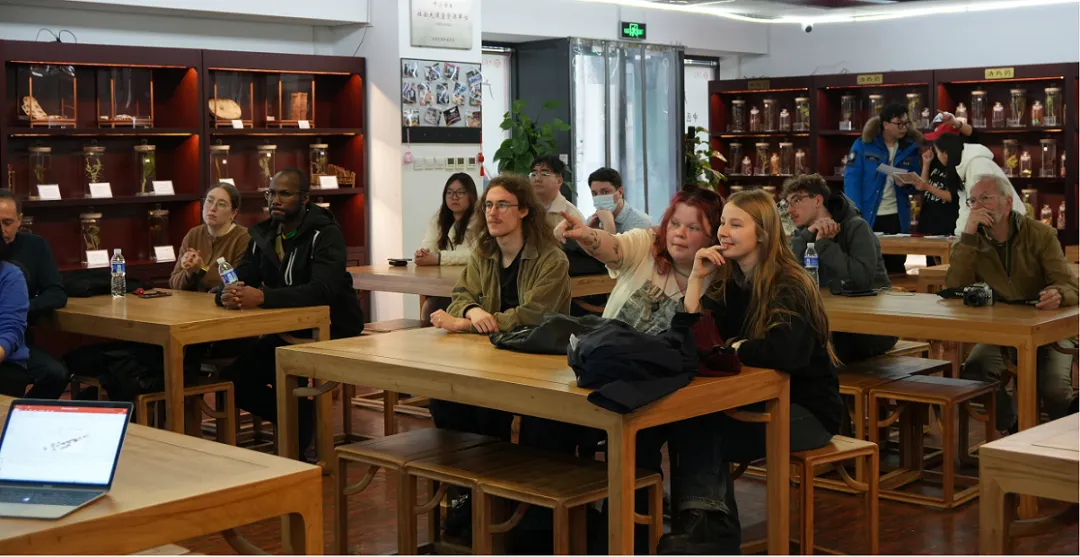
After admiring the majestic Tiananmen Square, students from both universities proceeded to the Forbidden City. Forming collaborative teams, they immersed themselves in the "Digital Exploration of the Forbidden City" experience. Through interactive digital exhibits, they learned about the cultural significance embedded in the palace complex—such as the "Nine Mythical Beasts" atop the Hall of Supreme Harmony and the ritual meaning behind the "nine rows of nine" nail patterns on palace gates—effectively applying vocabulary and knowledge acquired in their Chinese language classes in Canada to actively explore and understand Chinese cultural heritage.
At the Forbidden City Post Office, the international students mailed postcards—carefully prepared by Beicheng students and featuring landmark architecture along Beijing's Central Axis—to their families and friends back home. Each postcard not only carried warm wishes from the Beicheng students but also served as a medium for cultural exchange, helping ancient Chinese civilization shine with renewed vitality in the modern era.
